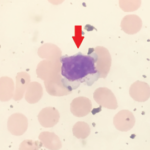The researchers calculated that eight women and four men needed to be screened with vertebral fracture assessment to detect a vertebral fracture. The investigators determined that using a bone mineral density T-score cutoff of -2.5 for vertebral fracture assessment testing would have identified 69.5% of women and 54.5% of men with vertebral fractures detected by vertebral fracture assessment, while avoiding 47.8% and 67.3% of the vertebral fracture assessments performed.
The major osteoporotic fracture probability was substantially higher in women than men (20.2% vs. 3.3%) and fewer men than women met a treatment threshold of major osteoporotic fracture 20% or greater. For those with major osteoporotic fracture probability below 20%, vertebral fracture assessment identified an incremental 3.4% of women for treatment based on vertebral fracture and 5.4% of men. The results were similar when the team excluded individuals with other selected risk factors, such as aromatase inhibitor users, glucocorticoid users and any prior non-trauma fractures.
Lara C. Pullen, PhD, is a medical writer based in the Chicago area.
Reference
- Leslie WD, Lix LM, Binkley N. Targeted vertebral fracture assessment for optimizing fracture prevention in Canada. Arch Osteoporos. 2020 May 3;15(1):65

